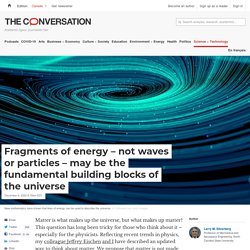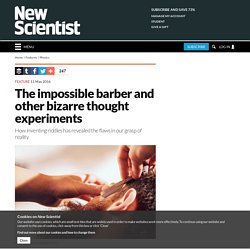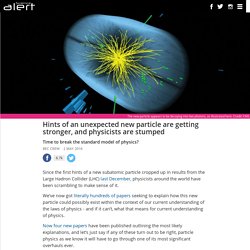

Fragments of energy – not waves or particles – may be the fundamental building blocks of the universe. Matter is what makes up the universe, but what makes up matter?

This question has long been tricky for those who think about it – especially for the physicists. Reflecting recent trends in physics, my colleague Jeffrey Eischen and I have described an updated way to think about matter. We propose that matter is not made of particles or waves, as was long thought, but – more fundamentally – that matter is made of fragments of energy. From five to one The ancient Greeks conceived of five building blocks of matter – from bottom to top: earth, water, air, fire and aether. Then, about 300 years ago, Sir Isaac Newton introduced the idea that all matter exists at points called particles. This was a vast improvement over the ancient Greeks’ five elements, but was still flawed.
Einstein proposed a remedy in his theory of general relativity. Using newer mathematical tools, my colleague and I have demonstrated a new theory that may accurately describe the universe. Flow and fragments of energy. Is this Fundamental Phenomenon of the Universe an Illusion? - The Daily Galaxy. Could both gravity and the Big Bang be an illusion?

In January 2010, Erik Verlinde, professor of Theoretical Physics and world-renowned string theorist, caused a worldwide stir with the publication of On the Origin of Gravity and the Laws of Newton, in which he challenged commonly held perceptions on gravity, going so far as to state ‘for me gravity doesn’t exist’. If he is proved correct, the consequences for our understanding of the universe and its origins in a Big Bang will be far-reaching. Verlinde, who received the Spinoza prize (the Dutch Nobel Prize) from the Netherlands Organisation for Science, is famous for developing this new theory, or idea, on gravity in which he says that gravity is an illusion. "Gravity is not an illusion in the sense that we know that things fall," says Verline. " Most people, certainly in physics, think we can describe gravity perfectly adequately using Einstein’s General Relativity. "We have other phenomena in Physics like this," Verlinde continued. Entropic gravity - Wikipedia.
Neo-Vedanta - Wikipedia. Interpretations of Hinduism that developed in the 19th century Neo-Vedanta, also called Hindu modernism, neo-Hinduism, Global Hinduism and Hindu Universalism,[web 1] are terms to characterize interpretations of Hinduism that developed in the 19th century.

The term "Neo-Vedanta" was coined by Paul Hacker, in a pejorative way, to distinguish modern developments from "traditional" Advaita Vedanta. Scholars have repeatedly argued that these modern interpretations incorporate western ideas into traditional Indian religions, especially Advaita Vedanta, which is asserted as central or fundamental to Hindu culture. Other scholars have described a Greater Advaita Vedānta,[note 1] which developed since the medieval period. Among the main proponents of such modern interpretations of Hinduism were Vivekananda, Aurobindo and Radhakrishnan, who to some extent also contributed to the emergence of Neo-Hindu movements in the West. Definition and etymology[edit] History[edit] "Greater Advaita Vedanta"[edit] The impossible barber and other bizarre thought experiments. Dmytro Zinkevych/Alamy Stock Photo By Stephen Battersby If you imagined that thought experiments were mere mental gymnastics meant to bamboozle the uninitiated, think again.

Take Schrödinger’s cat, perhaps the most famous example, which involves a cat that is simultaneously alive and dead. It seems bizarre – and that’s the point. It was designed as a slap on the wrist for quantum theorists, to show that a theory that predicts such nonsense must be missing something. But other thought experiments have forced us to reformulate the laws that describe nature. Here are seven classic thought experiments that might make you think… Advertisement The impossible barber A certain barber is very particular about his work. This barber is often used to illustrate a more abstract puzzle known as Russell’s paradox. The paradox exposed contradictions in much of the mathematics of the time, forcing Russell and others to try to devise more intricate logical footings for mathematics. Galileo’s balls. Hints of an unexpected new particle are getting stronger, and physicists are stumped.
Since the first hints of a new subatomic particle cropped up in results from the Large Hadron Collider (LHC) last December, physicists around the world have been scrambling to make sense of it.

We’ve now got literally hundreds of papers seeking to explain how this new particle could possibly exist within the context of our current understanding of the laws of physics - and if it can’t, what that means for current understanding of physics. Now four new papers have been published outlining the most likely explanations, and let’s just say if any of these turn out to be right, particle physics as we know it will have to go through one of its most significant overhauls ever. "If this thing is true, it’s huge. It’s very different than what the last 30 years of particle physics looked like," theoretical physicist David Kaplan from Johns Hopkins University told Emily Conover at Science News. But assuming it’s not, here’s what we know.